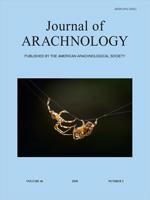Arachnids have many setae that are used as sensory organs. Spiders have been shown to use trichobothria to sense air movements. Scorpions also have trichobothria, located solely on their pedipalps. In scorpions, these trichobothria have been used for taxonomic purposes, due to their systematic variations across taxa. In the lab, buthid scorpions respond to moth-like air vibrations by “hunting” a dummy prey, but scorpionids retreat. The eastern sand scorpion, Paruroctonus utahensis (Williams, 1968) is a member of the family Vaejovidae; by measuring its responses to air movements, we can begin to compare behavior of scorpion families. To determine the responses of P. utahensis to air stimulus, we created a piston-driven moth analog. To assess the trichobothria as candidate detectors of our air stimulus, we also monitored trichobothrial deflection in response to the moth analog. In behavioral trials, we ran this device for 10 seconds and recorded each scorpion's immediate responses as negative, neutral, or positive. For a control, we ran the device without its piston. Scorpions experienced both conditions. We found a significant difference between scorpions' responses under experimental and control conditions. On average, scorpions responded more negatively to experimental conditions as compared to control conditions. These data suggest that vaejovids, like scorpionids, retreat when they encounter a moth. We also found that our device was effective in stimulating appropriate trichobothrial deflection. Our moth analog could therefore be useful in further studies investigating the physiological mechanisms of prey detection.
How to translate text using browser tools
1 August 2018
Response of the eastern sand scorpion, Paruroctonus utahensis, to air movement from a moth analog
Kathryn Ashford,
Raven Blankenship,
Wyatt Carpenter,
Isaac Wheeler,
Douglas Gaffin
ACCESS THE FULL ARTICLE

The Journal of Arachnology
Vol. 46 • No. 2
August 2018
Vol. 46 • No. 2
August 2018
orientation
Scorpiones
sensory
Trichobothria
Vaejovidae




